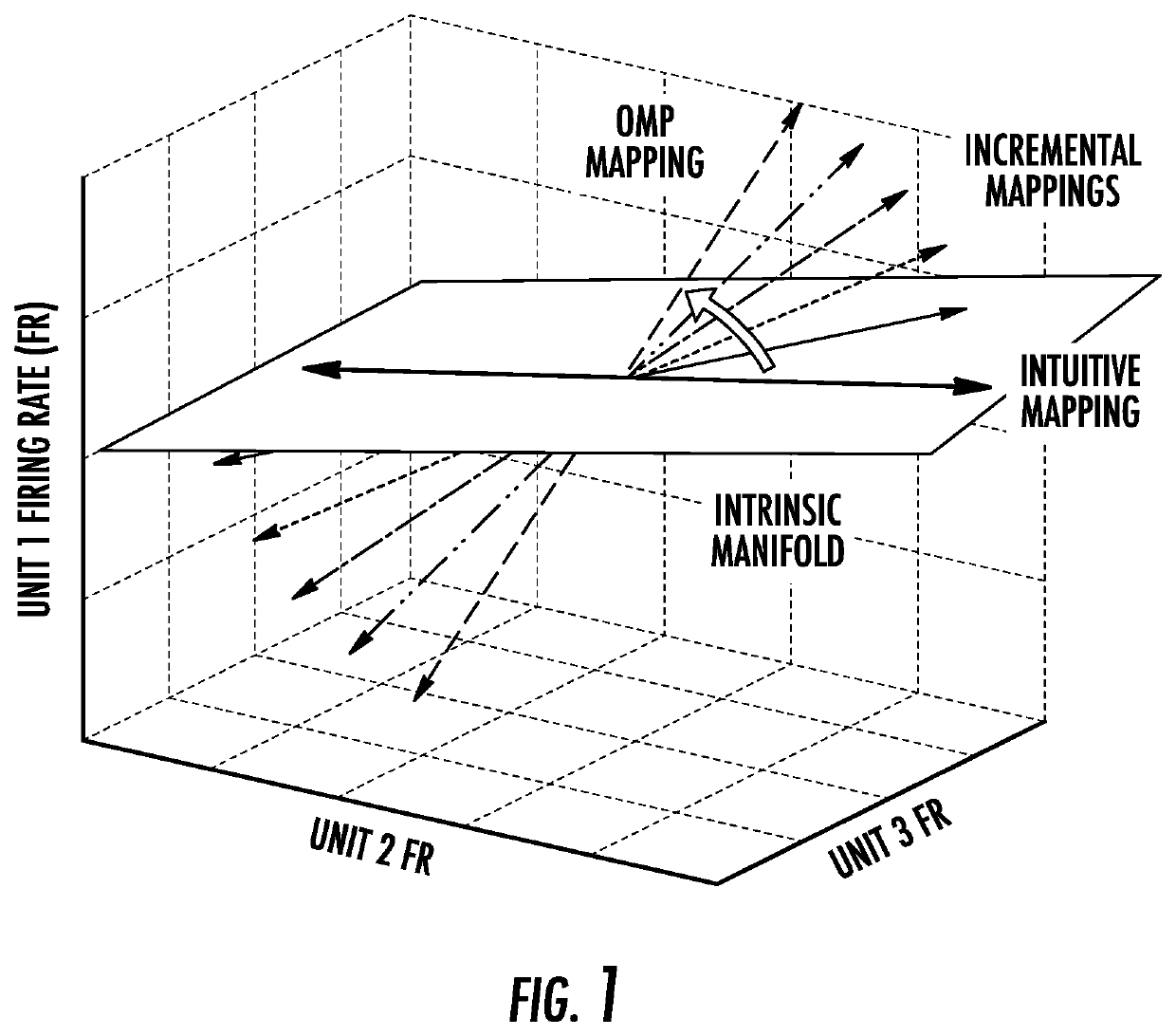Method of incremental training to create new patterns of physiological control signals
a physiological control and training pattern technology, applied in mental therapies, instruments, applications, etc., can solve the problem of difficult to establish a causal link between specific changes in the brain and new behavioral abilities
- Summary
- Abstract
- Description
- Claims
- Application Information
AI Technical Summary
Benefits of technology
Problems solved by technology
Method used
Image
Examples
Embodiment Construction
[0030]To demonstrate the method of the present invention, a BCI paradigm was employed in which a subject demonstrates a desired behavior, namely, the movement of a computer cursor from the center of a screen to one of eight peripheral targets, by volitionally modulating the activity of a population of ˜90 neural units recorded with a multielectrode array implanted in the arm region of primary motor cortex. The learning begins by presenting the subject with an “intuitive” mapping that relates neural activity to cursor velocities in a way that provides proficient control without requiring the subject to learn. A series of novel mappings from neural activity to cursor velocity are then presented to the subject. The novel mappings encouraged the formation of new neural activity patterns. The novel mappings are incrementally learned by the formation of new neural activity patterns, and those patterns directly drive the desired behavior.
[0031]Electrophysiology and Behavioral Monitoring—Th...
PUM
 Login to View More
Login to View More Abstract
Description
Claims
Application Information
 Login to View More
Login to View More - R&D
- Intellectual Property
- Life Sciences
- Materials
- Tech Scout
- Unparalleled Data Quality
- Higher Quality Content
- 60% Fewer Hallucinations
Browse by: Latest US Patents, China's latest patents, Technical Efficacy Thesaurus, Application Domain, Technology Topic, Popular Technical Reports.
© 2025 PatSnap. All rights reserved.Legal|Privacy policy|Modern Slavery Act Transparency Statement|Sitemap|About US| Contact US: help@patsnap.com



